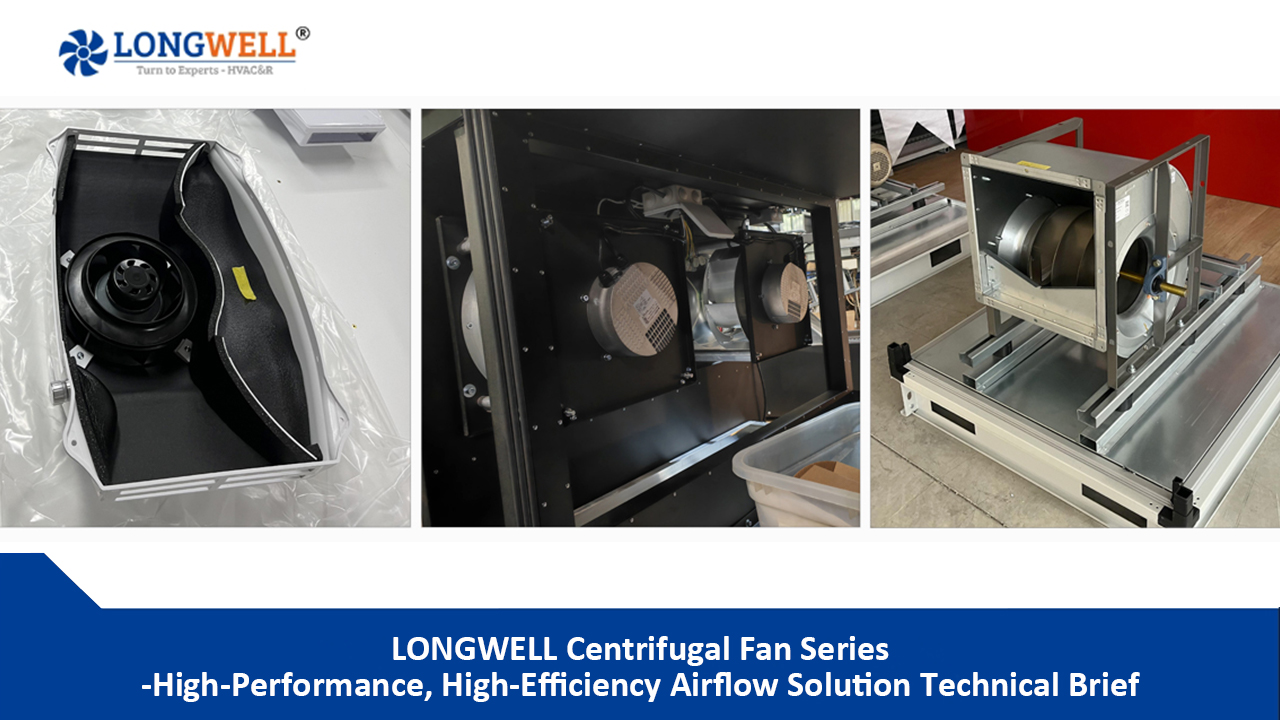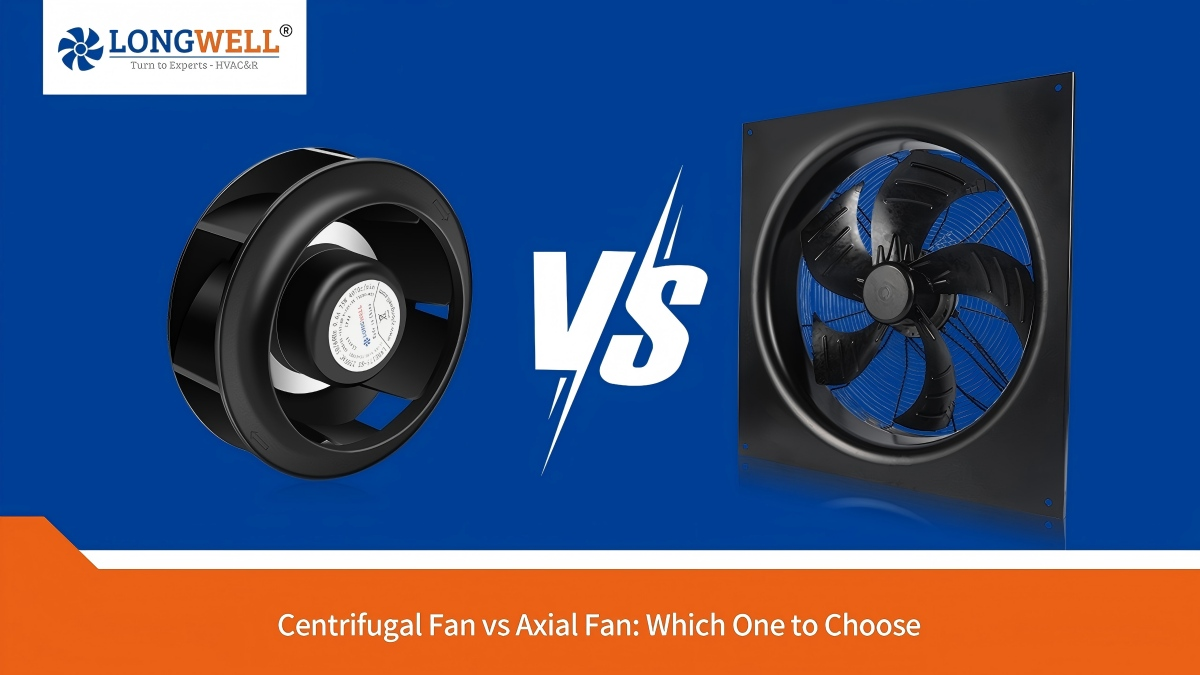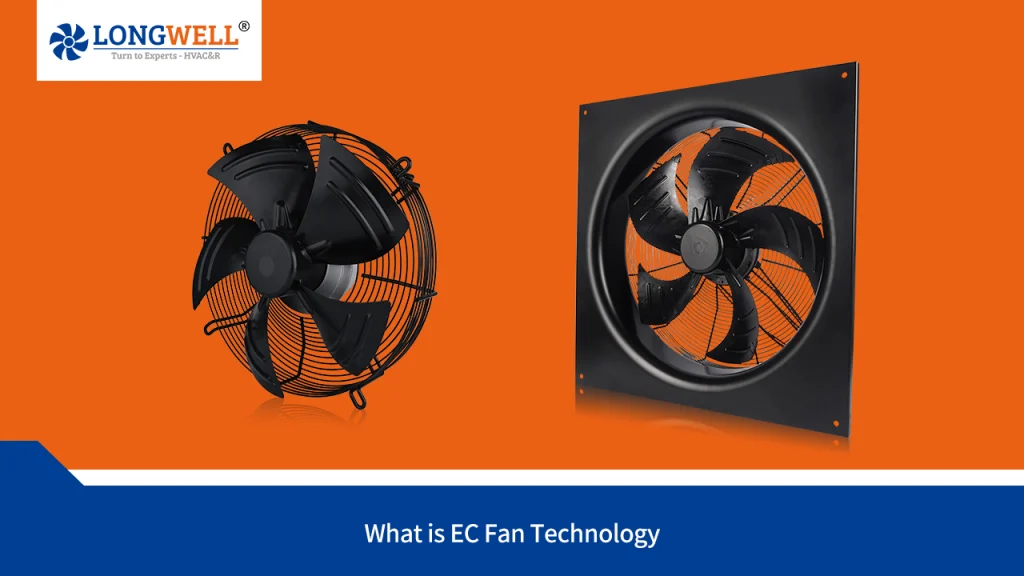
Industrial axial fans are very important for keeping machines cool. They move a lot of air straight along the fan’s axis. This strong airflow takes away heat fast. It helps stop machines from breaking down. New models, like Longwell Axial Fans, are small and quiet. They also use less energy.
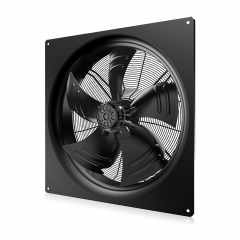
Feature | Axial Fans | Centrifugal Fans |
|---|---|---|
Airflow Volume | Moves lots of air at low pressure | Moves less air at higher pressure |
Energy Efficiency | Uses less energy in low-pressure situations | Usually uses more power |
Design | Bigger and more complicated |
Key Takeaways
Axial fans push a lot of air fast to cool machines and stop them from getting too hot. Picking the right size and type of axial fan helps machines work better and use less energy. Cleaning and oiling the fans often keeps them working well and helps machines last longer. Axial fans are small, quiet, and cheaper than other cooling ways like centrifugal fans or liquid cooling. Good axial fans, like Longwell models, cool better, make less noise, and use less energy.
Overheating Risks
Causes
Machines can get too hot for many reasons. This is a big problem in factories and businesses.
If there is not enough ventilation, hot air gets stuck. This makes machines heat up fast.
When filters are dirty or blocked, air cannot move well. Machines then have trouble cooling down.
Hot weather, like during a heat wave, makes it even harder for machines to cool off.
If machines do not have good lubrication, parts rub together more. This makes them get hotter inside.
Broken parts, like bad bearings or valves, make machines work harder and get hotter.
If condenser coils or heat exchanger cores are blocked, heat cannot escape.
Running machines for a long time without stopping lets heat build up inside.
If the voltage is wrong, motors work too hard and make extra heat.
Machines that are too close together trap heat between them. This raises the chance of overheating.
If you use machines too much, they get hotter and more stressed.
Tip: Check and take care of your machines often. This helps you find problems early and stop overheating.
Consequences
When machines get too hot, problems can happen fast or slowly. Both kinds of problems can hurt your machines and your business.
Machines may slow down, break, or stop working right away. This can stop your work.
If you ignore warning signs, like overheating alerts, machines can fail. This can also be dangerous.
When machines overheat, you lose time and miss important work deadlines.
If you run machines too long without breaks, they get stressed and can break down.
Not taking care of machines, like skipping checks or using bad parts, makes them wear out faster.
Small problems, like leaks or blocked filters, can turn into big failures if you do not fix them.
Dirt or water inside machines makes them wear out faster and work less well.
Overheating can hurt lubricants, hoses, and seals. This means you might have to pay a lot to fix them.
If machines stop working because of overheating, it can cost a factory up to $250,000 every hour. Sometimes, these stops last for hours and cost millions each year. Overheating is a big reason for these losses. That is why good cooling and taking care of machines is very important.
Axial Fan Cooling
Airflow Mechanics
When you use an axial fan, you move air straight along the fan’s axis. The blades spin and push air forward, creating a strong flow. This design lets you move a lot of air quickly. The fan housing helps guide the air, so you get less turbulence and better efficiency. You can see how this works in the table below:
Aspect | Explanation |
|---|---|
Blade Design | Blades spin and push air parallel to the axis. The shape and angle of the blades decide how much air moves. |
Fan Housing (Casing) | The casing guides the air and stops leaks, making the fan work better. |
Airflow Characteristics | The fan creates a high volume of air at low pressure, perfect for cooling and ventilation. |
Heat Removal Impact | Fast airflow takes away hot air and brings in cooler air, keeping machines at safe temperatures. |
Many tube axial fans have blades set parallel to the axis. This setup gives you a focused, high-speed airflow. You can use these fans in ducts or ventilation systems to keep air moving where you need it most. When you use an axial fan, you make sure hot air leaves your machines and cool air comes in. This keeps your equipment from getting too hot.
Longwell Axial Fans stand out because they are compact and quiet. You can fit them in tight spaces, and they will not make much noise. They work well in places where you need strong airflow but do not want a lot of sound.
Heat Dissipation
You need to keep your machines cool to avoid damage. An axial fan helps by moving large amounts of air over hot parts. The air flows in a straight line, which means it covers all the important areas. This steady airflow takes heat away fast and keeps temperatures down.
Axial fans work well in many settings. You will find them in heat exchangers, where they help transfer heat away from fluids or gases. In HVAC systems, they keep air moving so rooms stay comfortable. Industrial machinery uses these fans to cool motors, electronics, and other parts that get hot during use.
Longwell Axial Fans show their value in real-world jobs. For example, you might see them in air handling units in factories, fan coil units, or even on the roof as part of a building’s ventilation. They also help cool server rooms, heat pumps, and refrigeration equipment. In one case, a company in Spain used Longwell EC axial flow fans to improve cooling in their machines. They saved energy and kept their equipment running safely.
You can trust an axial fan to run quietly and use less power. Many models let you control the speed, so you get just the right amount of cooling. The strong, durable design means you can use them in tough places, like factories or outside in harsh weather.
Tip: Choose an axial fan with the right size and airflow for your needs. This helps you get the best cooling and keeps your machines safe.
Axial Fan vs. Other Methods
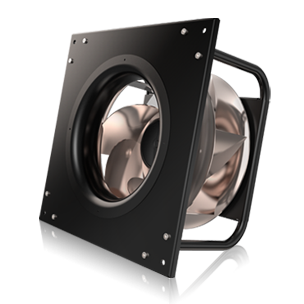
Centrifugal Fans
You might wonder how centrifugal fans are different from axial fans. Centrifugal fans move air at a right angle to where it comes in. Axial fans push air straight along the axis. This makes each fan work in its own way. Centrifugal fans make higher pressure. This helps when you have filters or ducts that block air. Axial fans are better when you need to move lots of air and there is not much blocking it.
Here is a table that shows the differences:
Feature | Axial Fans | Centrifugal Fans |
|---|---|---|
Airflow Direction | Parallel to shaft | At right angles to intake |
Pressure Capability | Low pressure, high volume | Moderate to high pressure |
Installation Depth | Compact, 10–60 mm depth | Needs more space |
Noise Level | Generally quieter | Often needs silencers |
Typical Use | Radiators, electronics, open spaces | Filters, ducts, high resistance areas |
You can use axial fans in small spaces because they are compact. Centrifugal fans need more room because of their shape.
Liquid Cooling
Liquid cooling uses water or coolant to take away heat from machines. This cools better than air, but it costs more and is harder to take care of. You have to check for leaks and watch the coolant level. You also need to change the fluids sometimes. Liquid cooling systems need pumps, pipes, and special heat exchangers.
Factor | Liquid Cooling | Axial Fan (Air) Cooling |
|---|---|---|
Efficiency | High, lowers temperature more | Good for most needs |
Initial Cost | Expensive | Lower cost |
Maintenance | Complex, needs regular checks | Simple, needs cleaning |
Noise Level | Quiet | Can be noisier |
Space | Compact | Needs more space |
Safety | Risk of leaks | No liquid hazard |
Liquid cooling works well where there is a lot of heat. But it can be tricky to use. You have to watch for leaks and keep the fluid clean. The system must fit your machines. Many people still use small fans to help with extra heat and moisture.
Unique Benefits
Axial fans have special benefits. They move a lot of air but use less energy. Their small size lets them fit in tight spots. You can put them in many places. They cost less to buy and run. They are also quieter, which helps in places where noise matters.
Longwell’s fans are very flexible. You can pick from AC, DC, EC, and tube axial fans. They come in many sizes, from 15 mm up to 900 mm. They use strong materials like stainless steel and aluminum. You can use them in factories, hotels, and data centers. Longwell fans are easy to take care of and last a long time. You can even get custom options if you need them.
Tip: If you want a cooling solution that is reliable, flexible, and saves money, a axial fan from Longwell can work in many places.
Fan Selection & Maintenance
Choosing an Axial Fan
When you pick an axial fan for your machinery, you need to look at several important factors.
First, check how much airflow your machine needs. This is measured in cubic feet per minute (CFM).
Next, think about where you will use the fan. Some fans work better indoors, while others are made for outdoor or harsh environments.
Noise level matters, especially if you use the fan in a quiet area.
Look at the temperature range. Make sure the fan can handle the hottest and coldest days your machine will face.
Pressure levels are also important. Axial fans work best in low-pressure spaces.
Energy efficiency helps you save money over time.
Maintenance should be easy, so you spend less time fixing the fan.
You also want a fan that fits your space and matches your cooling needs.
Longwell offers many types of fans for different jobs. You can choose from AC, DC, EC, and tube axial fans. AC fans are strong and good for heavy-duty use. DC fans are quiet and save energy. EC fans give you the best efficiency and last a long time. Tube axial fans work well in ducts or tight spaces. This wide range means you can always find a fan that fits your needs.
Fan Type | Best For | Key Benefit |
|---|---|---|
AC Axial | Industrial, heavy-duty | Reliable, robust |
DC Axial | Electronics, quiet areas | Low noise, energy saving |
EC Axial | HVAC, energy-focused projects | High efficiency, long life |
Tube Axial | Ducts, tight spaces | Focused airflow, compact |
Tip: Always match the fan size and type to your machine’s airflow and space needs.
Installation Tips
Proper installation helps your fan work better and last longer.
Mount the fan securely to stop vibration and noise.
Leave enough space around the fan for air to move freely.
Use vibration pads or isolators to reduce noise.
Check all wiring and follow the manufacturer’s instructions for safety.
Avoid placing the fan near bends or blockages in ducts.
Use guards or covers to keep debris out.
Common mistakes include mounting the fan unevenly, blocking the air inlet or outlet, and using the wrong wire size. These can cause damage or reduce performance.
Maintenance Best Practices
Regular care keeps your fan running smoothly and protects your machinery.
Clean the blades and housing often to remove dust and dirt.
Lubricate moving parts as the manufacturer suggests.
Inspect the fan for loose bolts, worn parts, or strange noises.
Check the motor and electrical connections for signs of wear.
Replace damaged parts right away to avoid bigger problems.
Keep a record of all maintenance tasks.
Note: Good maintenance lowers repair costs and helps your machinery last longer.
You need an axial fan to help keep your machines cool. These fans push a lot of air, so machines do not get too hot. This stops expensive problems and keeps things working well. Newer fans, like Longwell’s, have smart motors and small shapes. They fit in tight spots and do not make much noise. Many businesses say they pay less for energy and have fewer problems after using these fans.
Think about what kind of cooling your machines need. Picking the right fan helps your machines last longer and saves you money.
FAQ
What makes axial fans better for machinery cooling?
Axial fans push a lot of air very fast. This strong airflow cools machines quickly. Their small size lets them fit in tight spots. They also use less power than other fans.
How do I know which axial fan size I need?
Find out how much airflow your machine needs in CFM. Check the space where you will put the fan. Pick a fan that matches your machine’s airflow and space needs.
Can I use axial fans outdoors?
Yes, many axial fans work outside. Pick a fan made for outdoor use. Make sure it has weather-resistant parts and good sealing. Always follow what the maker says.
How often should I clean my axial fan?
Clean your axial fan every few months. Dust and dirt can pile up on the blades. Cleaning often keeps airflow strong and helps your fan last longer.
Are Longwell Axial Fans energy efficient?
Longwell Axial Fans have smart motors and good designs. They help you save energy and keep machines cool. Many models are quiet and work well for different jobs.
See Also
Selecting The Best Axial Fan For Your Needs In 2025
The Importance Of Centrifugal Fans In HVAC And Industry
A Guide To Picking The Ideal Cross Flow Fan For Use
Choosing The Perfect Centrifugal Fan For Your 2025 Project
Key Industrial Blower Fan Innovations Manufacturers Must Follow

